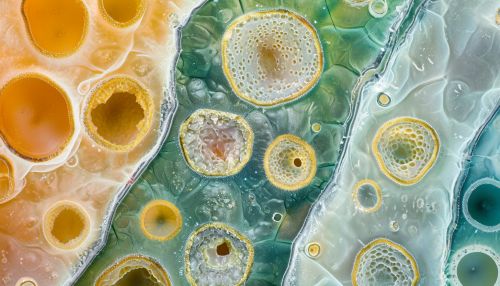Excavata
Overview
The Excavata is a major supergroup of unicellular organisms, belonging to the domain of Eukaryotes. This supergroup is characterized by its unique cytoskeletal features, primarily the ventral feeding groove, or excavated region, from which it derives its name. The Excavata supergroup includes a diverse range of organisms, from free-living species to parasites.


Classification
The classification of Excavata has been a subject of debate among scientists. The group was first proposed by Cavalier-Smith in 2002 as a new phylogenetic category. It was initially thought to be a monophyletic group, meaning all members share a common ancestor. However, recent studies using molecular data have suggested that Excavata may be polyphyletic, with different members having different evolutionary origins.
Excavata is divided into six main subgroups: Diplomonads, Parabasalids, Heteroloboseans, Euglenozoans, Percolozoans, and Jakobids. Each of these subgroups represents a distinct lineage within the Excavata supergroup.
Characteristics
Excavata organisms exhibit a wide range of morphological diversity, but they all share certain common characteristics. The most distinctive feature is the presence of a ventral feeding groove, or excavated region, which gives the group its name. This groove is supported by a unique cytoskeletal structure, which is often associated with flagella.
In addition to the feeding groove, many Excavata species have highly modified mitochondria. These modifications can include the loss of typical mitochondrial features, such as cristae, and the presence of unique metabolic pathways.
Ecology and Life Cycle
Excavata species occupy a wide range of ecological niches. Some are free-living organisms found in a variety of aquatic and terrestrial environments, while others are parasites that can cause serious diseases in humans and other animals.
The life cycle of Excavata organisms varies greatly depending on the species. Some undergo simple binary fission, while others have complex life cycles involving multiple hosts and stages of development.
Impact on Human Health
Several Excavata species are significant human pathogens. For example, Giardia lamblia, a member of the Diplomonads, is a common cause of waterborne diarrheal disease. Trypanosoma brucei, a Euglenozoan, is the causative agent of African sleeping sickness, a potentially fatal disease transmitted by the tsetse fly.
